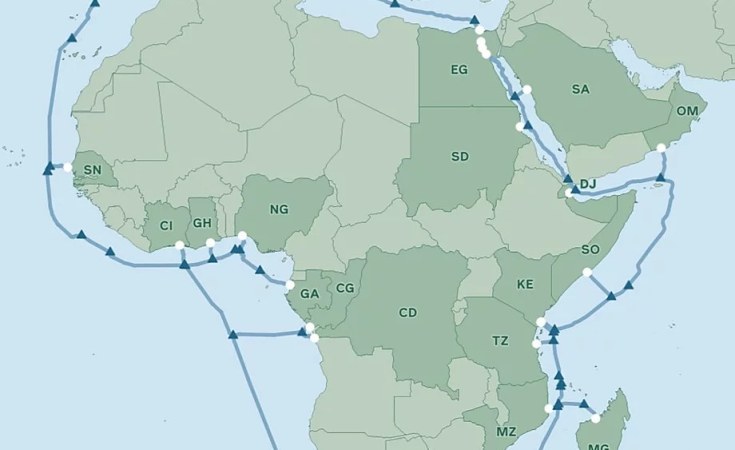 analysis
analysis
London — In
July last year Google initiated the Equiano cable. The announcement of
the 2Africa cable which involves Facebook completes the second
generation cable build announcements. Russell Southwood talked to Ibrahima Ba, Network Investments Lead at Facebook about how it might work.
This massive new
cable will be 37,000 kms long, connecting 23 countries. The 16 African
countries connected are Congo-Brazzaville, Cote d'Ivoire, Djibouti, DRC,
Egypt, Gabon, Ghana, Kenya, Madagascar, Mozambique, Nigeria, Sudan,
Senegal, Somalia (landing at Mogadishu), Tanzania and South Africa.
It will provide a
nominal capacity of 180 Tbit/s, a capacity that is "significantly
higher" than the capacity of all existing cables and has the ability to
keep adding a great deal more capacity as and when needed. The hovering
question is whether African markets will have the capacity to absorb
this level of additional international capacity. According to Ba:"It's
rather like an insurance policy. The existing cables do not have enough
capacity to fulfill demand in the next 3-5 years.
The 2Africa cable
will integrate the new SDM1 technology, designed by ASN, allowing the
deployment of a maximum of 16 pairs of fibers. It will also incorporate
"optical switching" technology to allow flexible management of
bandwidth. The consortium has commissioned ASM and Alcatel Lucent to
build the cable and according to Ba, it should be completed by late 2023
and early 2024.
It has eight
international and African partners, at least one of which had spent
several years trying to initiate its own consortium. The consortium
members are: China Mobile International, Facebook, MTN GlobalConnect,
Orange, stc, Telecom Egypt, Vodafone and WIOCC (the east coast cable
consortium).
The management and
ownership structure of the cable is the classic consortium model, not
unlike SAT3 and WACS. However, the parties will not talk about the level
of investment that each have made in the cable or indeed who has the
largest stakes in it. When I asked Ba whether Facebook had a majority,
he gave me the "I can't comment on that" response.
However, the
consortium members are publicly committed to some form of Open Access
principle:"There are no restrictions on buying and selling capacity.
Landing parties will provide capacity through open landing stations or
data centres at a pre-determined cost. For example, all of the parties
landing in Nigeria will make capacity available." In this context, an
agreement to provide a completely new link has been signed between
2Africa, Airtel and Telecom Egypt. This link will link the Red Sea and
the Mediterranean, the first in more than a decade.
Access will either
be through carrier-neutral data centres (some countries do not yet have
one or more of these) or through an Open Access landing station:"These
will be selected by parties in the cable." Without knowing the
shareholdings in the consortium, it's not possible to see who is likely
to the most influence in decision-making. Thus far under 10 of the 16
countries to be connected have carrier-neutral data centres and some of
the parties have interests in data centres that are described as
carrier-neutral
So will all this
new capacity lead to lower prices once it's built? Yes, it probably will
but as usual no-one is willing to say that:"There are two components to
answering your question. It depends on each of the consortium members;
the OTT, the MNOs and wholesale companies. The pricing of retail
capacity depends on many other factors. So I don't know if it will
translate directly into lower prices." So will it fall much below the
existing under US$5 per meg at high volumes:"That's a hard question. I
don't known. Wholesale pricing is coming down substantially."
From Facebook's
point of view, it's a different kind of player in the system:"It needs
to supply to POP locations to enable growth. Facebook is not a licensed
wholesale provider in our locations."

No comments:
Post a Comment